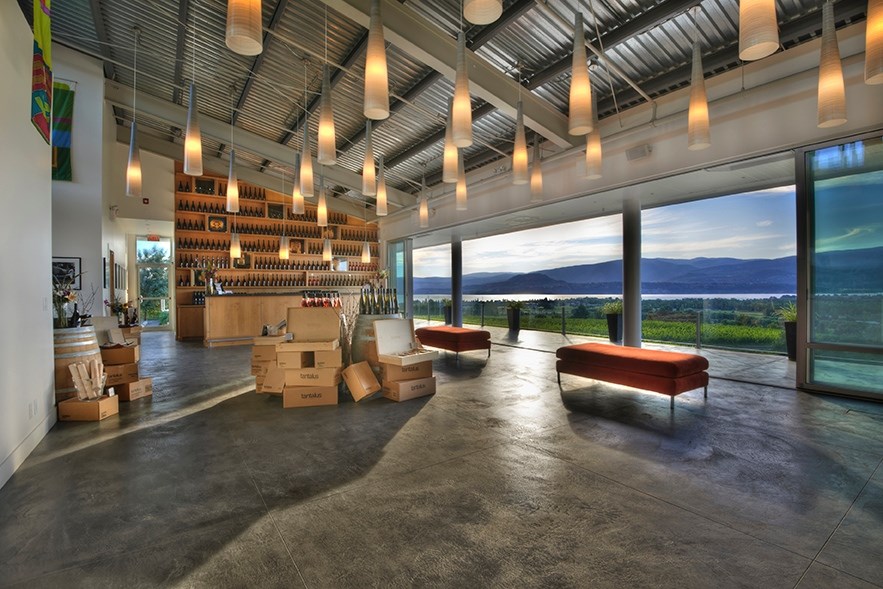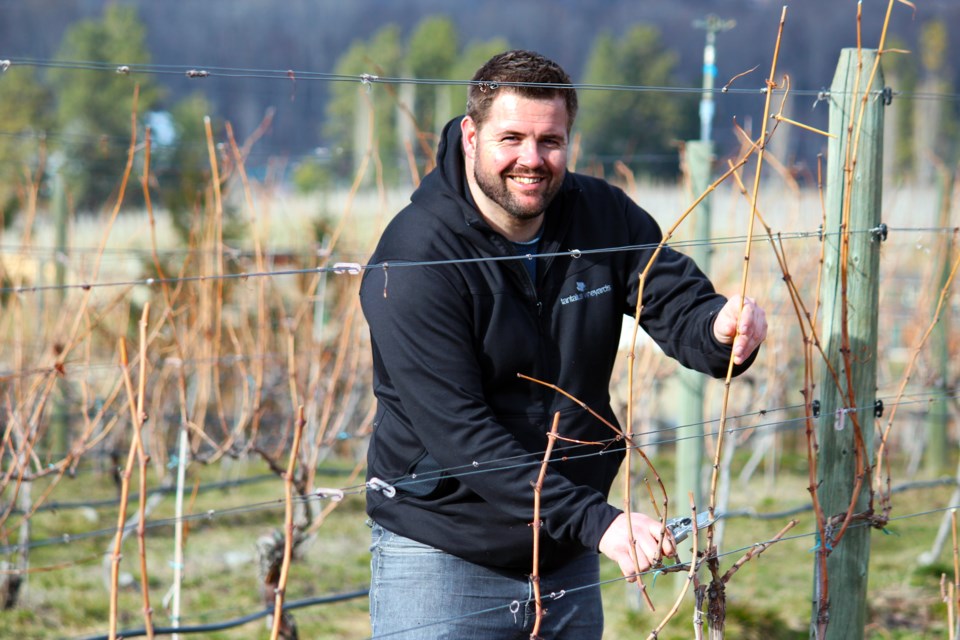I clearly remember my first sip of Tantalus’ Riesling almost 10 years ago. A colleague poured their inaugural 2005 vintage and asked me to guess where it was from. I went through my list of Riesling producing regions and finally settled on Australia. I was shocked when I learned it was from BC, which I didn’t even consider. It’s not that I hadn’t tasted good Riesling from BC; I simply hadn’t come across one so distinct and bold.
While the Tantalus label was new, the vineyard was well established. Prior to Eric Savics purchasing it in 2004, the property was called Pinot Reach and world-renown wine writer Jancis Robinson was among those who recognized its potential as far back as the late 1990s.
Besides some of the oldest Riesling in the valley (planted in 1978), it boasted 1985 plantings of Pinot Noir and Chardonnay along with “an Okanagan fruit salad of everything else” says winemaker David Paterson. Savics kept the good (the former three) and pulled out the bad, meaning grapes like Cabernet Sauvignon that never had any hope of ripening in this southeastern Kelowna location. In consideration of the terroir and growing conditions, he replaced these with more Riesling with the singular goal of making world-class wine.

Over a decade later, Tantalus hosted a 10-year anniversary tasting of every vintage of their Riesling from 2005 to 2014. The wines are a study in the evolution of the property. From 2005 to 2007 the wines were made entirely from the old vines. The 2008 possesses a small amount of the young vines and by 2009 grapes from these newer plantings make up the backbone of the blend. (Note that Tantalus also makes an ‘Old Vines’ cuvée which is drier in style and comes selected plots and grapes.)
At over 10 years old, the 2005 exudes apricot and honey but is still vibrant and full of life. I just loved the 2008 with its beautiful floral aromas and seamless balance. The 2012 also stands out with precise orchard fruit, minerals and lingering finish. The latest release, the 2014, is all peaches and apple with piercing acidity and a promising future.
The 2009 vintage is also the year that the current winemaker came on board. David Paterson had just returned to BC after working a season at the famed Henschke property in Australia’s Eden Valley. He landed a job at Tantalus taking over from Matt Holmes. It wasn’t the easiest year to start. The new winery was only half finished and the temperature dropped suddenly and severely. They had to call on the local rugby team to help pick everything as quickly as possible.
Every vintage has its own personality from cooler ones like 2010 and 2011 contributing to a leaner expression to hotter years like 2009 and 2013 giving more richness. Besides vintage variation, Paterson also recognizes the role the winemaker plays. He has refined a style that was established at the outset. His wines are just a little bit softer and slightly less angular than Holmes’. He seeks to create an equilateral triangle if you will, balancing of sugar, acidity and weight.
Tantalus wasn’t the first to make good Riesling but their success brought attention to this grape in BC. And perhaps it encouraged some to up their game.
“Now there are a whole bunch of people who grow great Riesling,” asserts Paterson. I couldn’t agree more. I’ve enjoyed fine examples from Okanagan wineries Gehringer Brothers, 8th Generation, Synchromesh, Quail’s Gate and Mission Hill, along with Orofino and Little Farm in the Similkameen just to name a few.
Despite all the accolades Tantalus has received thus far, Paterson proclaims, “the next 10 years are what we are really excited about.”
I’m already looking forward to that 20-year vertical.



